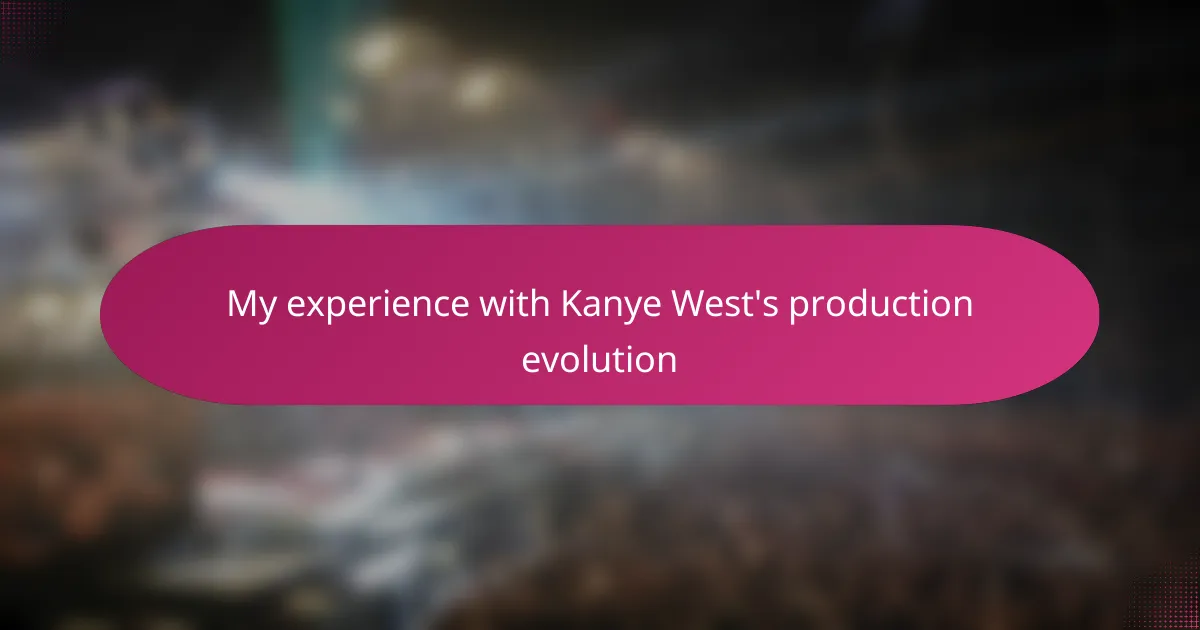Key takeaways
- Kanye West’s production style blends soulful sampling with innovative techniques, evoking deep emotions and reshaping the sound of rap music.
- His fearless experimentation, such as the raw sound of “Yeezus” and emotional vulnerability in “808s & Heartbreak,” has inspired other artists to explore new creative boundaries.
- Kanye emphasizes the importance of layering sounds thoughtfully and embracing imperfections, which adds a human touch to music production.
- The core lesson from Kanye’s work is to embrace change and risk in creative endeavors to foster growth and innovation.
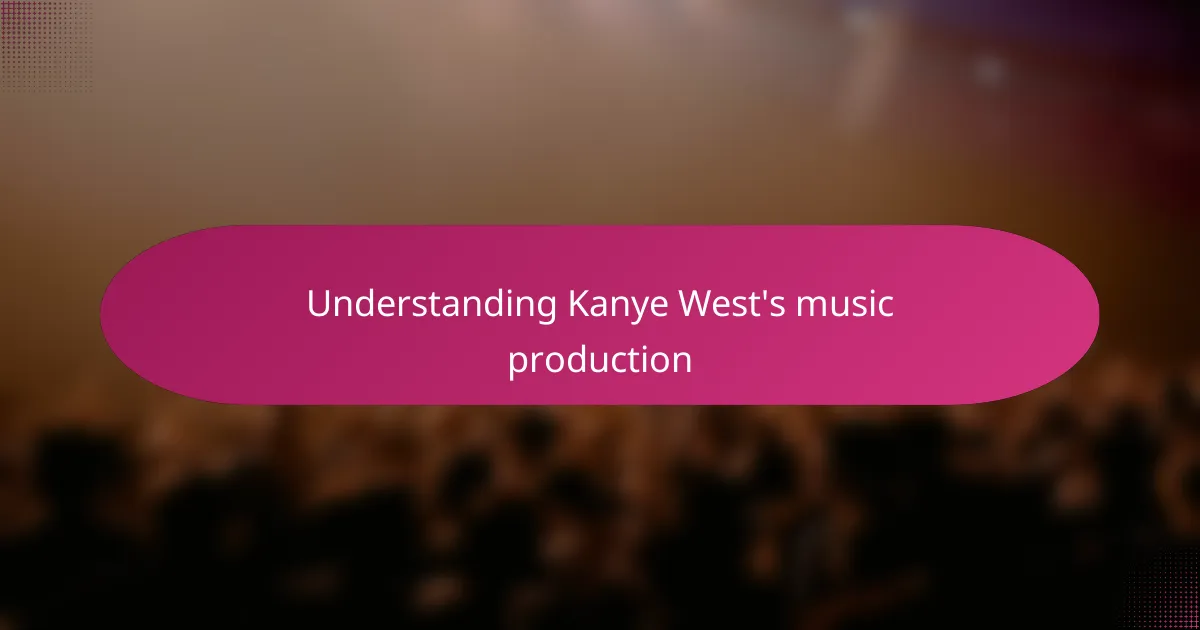
Understanding Kanye West’s music production
Kanye West’s production style always struck me as revolutionary because he blends soul and innovation so effortlessly. I remember hearing those pitched-up vocal samples and thinking, “How does he make something so old feel so new and fresh?” It’s a reminder that production isn’t just about beats; it’s about evoking emotion in unexpected ways.
What fascinates me most is how Kanye’s sound evolves but always stays true to his vision. Have you ever noticed how each album sounds entirely different, yet you can still tell it’s Kanye behind the boards? That consistency mixed with experimentation shows deep confidence and mastery.
Also, his use of imperfections—like offbeat drums or raw vocal takes—feels incredibly human to me. It breaks the polished mold of mainstream rap and adds character. I often wonder if this willingness to take risks is what keeps him relevant and respected after so many years.
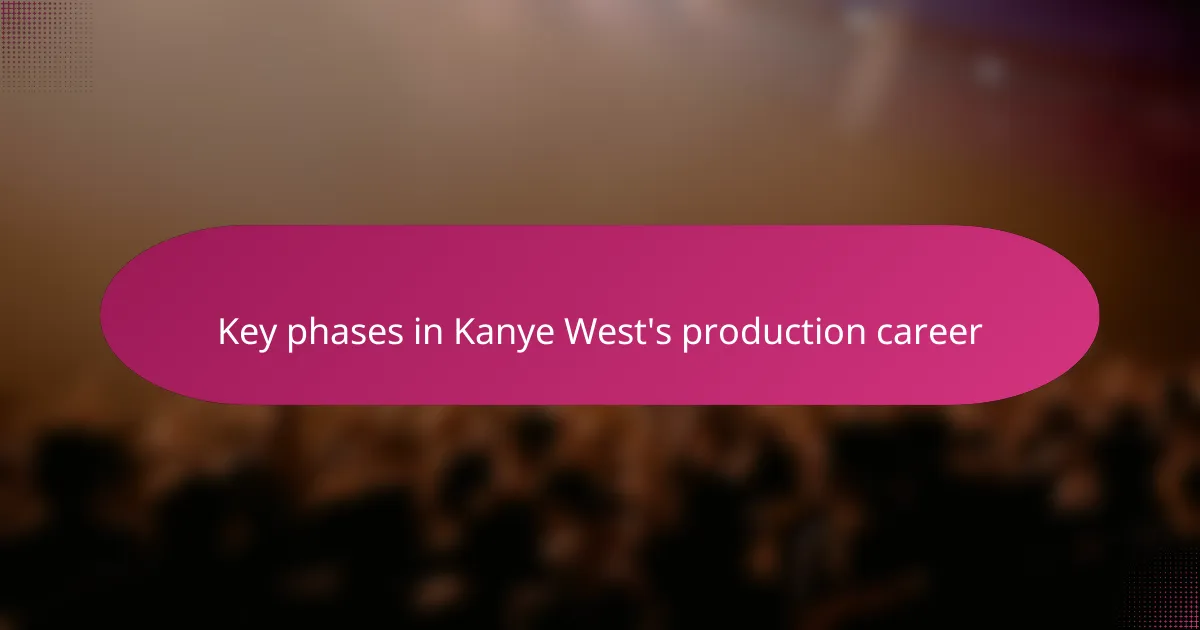
Key phases in Kanye West’s production career
Kanye’s early production phase, especially during his work on Jay-Z’s The Blueprint, really opened my eyes to his genius. I remember being blown away by how he flipped classic soul samples into something so fresh and punchy. It made me realize that sampling can be more than just borrowing—it can be reinventing.
Then came the 808s & Heartbreak era, which to me was a bold pivot. This phase felt raw and vulnerable, with those icy synths and auto-tuned vocals creating an emotional landscape I hadn’t heard from him before. Did you notice how this shift influenced a whole new wave of artists? It showed me that evolving isn’t just about change; it’s about shaping culture.
Later, with albums like Yeezus, Kanye went full experimental, stripping down his beats to aggressive, industrial sounds. At first, I wasn’t sure if I was ready for that sonic attack, but over time, it made me appreciate his fearless approach to production. It’s like he’s saying, “Comfort zones? Never heard of them.” This phase taught me that pushing boundaries can be uncomfortable but essential for growth.
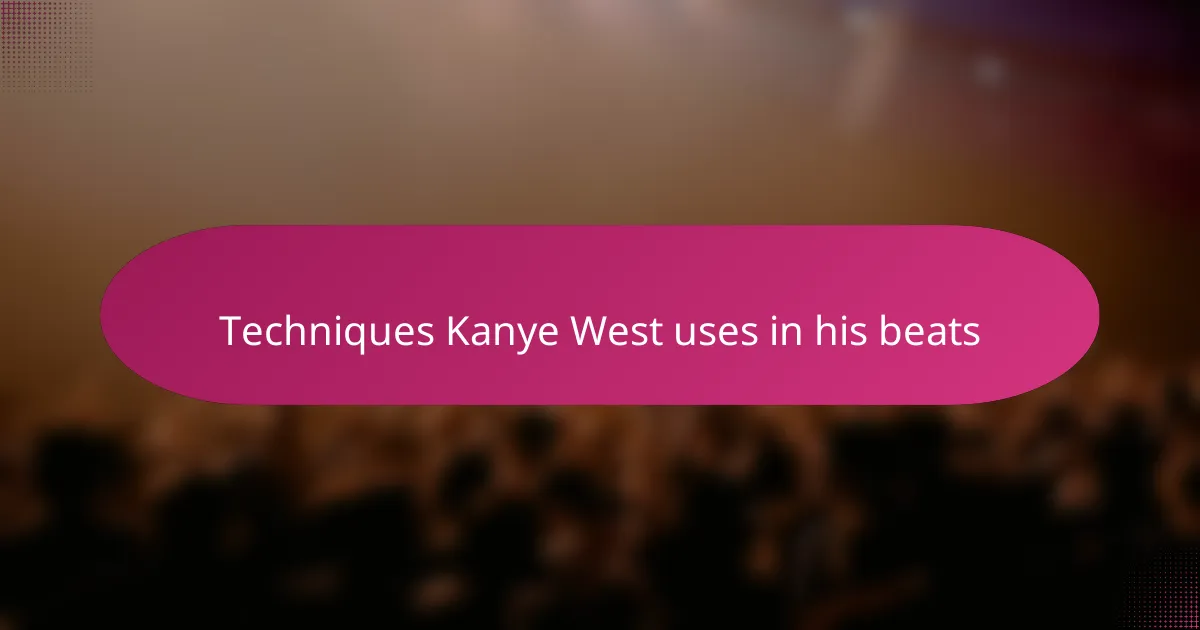
Techniques Kanye West uses in his beats
One technique Kanye West uses that always grabs my attention is his layering of sounds. He doesn’t just stack samples and drums randomly; each element feels carefully placed to build emotion. Have you ever noticed how a subtle piano or a faint vocal snippet can suddenly make a beat hit deeper? That’s Kanye’s magic—he knows when to hold back and when to let a sound explode.
Another thing I admire is Kanye’s manipulation of tempo and rhythm. He often plays with offbeat drums or unexpected pauses, creating this raw, almost imperfect groove that feels so human. It’s like he’s inviting you into his creative process, flaws and all. That unpredictability keeps me hooked every time I listen.
Lastly, his use of vocal samples transformed my understanding of production. Instead of just looping a phrase, Kanye chops, pitches, and rearranges vocals into new melodies. This approach not only refreshes old material but also adds a soulful texture that I haven’t heard matched by many producers. It makes me wonder how he hears these possibilities so vividly before anyone else.
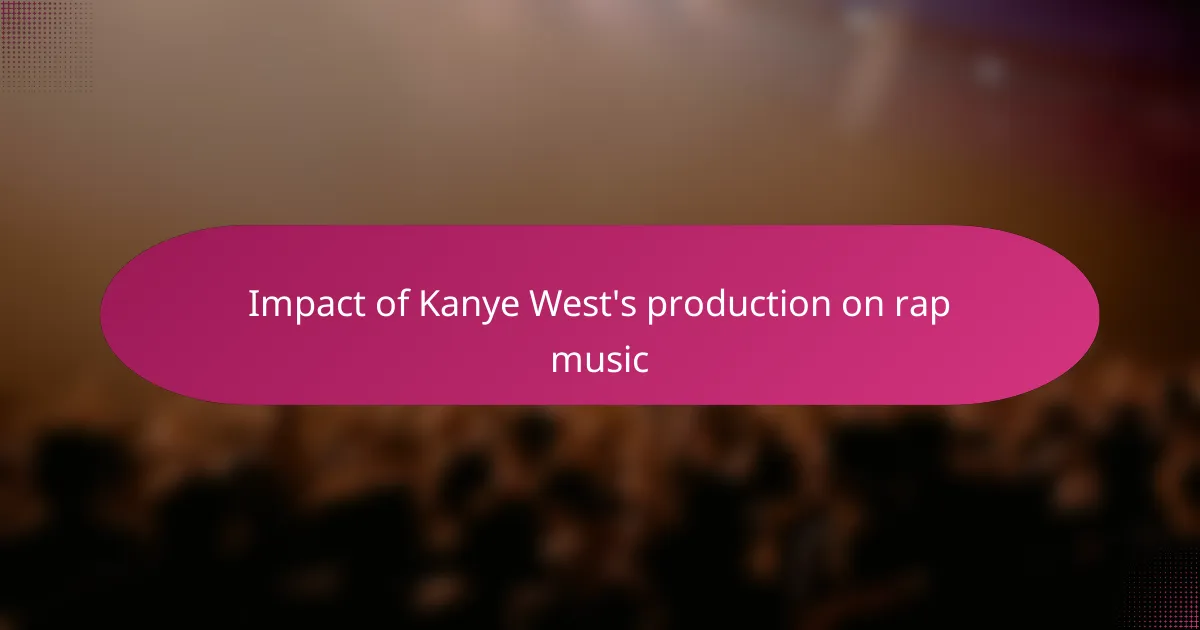
Impact of Kanye West’s production on rap music
Kanye’s production didn’t just change beats; it reshaped the very soundscape of rap music in my eyes. When I heard how his soulful sampling morphed into a new form of storytelling, I realized production could be as expressive as lyrics themselves. Have you ever caught yourself feeling something deeply from an instrumental alone? That’s Kanye’s impact right there.
What stands out to me most is how Kanye pushed other producers and artists to take bigger creative leaps. After 808s & Heartbreak, I noticed a wave of rappers embracing vulnerability and experimental sounds that used to be off-limits. It made me think—was Kanye redefining what rap music could emotionally convey? I’d say yes, because the genre felt more open and multifaceted after that.
Even now, when I listen to newer rap records, I can trace threads back to Kanye’s fearless production choices. His blend of traditional sampling with cutting-edge techniques influenced how beats are crafted, breaking the mold of what rap production “should” sound like. It’s like he gave everyone permission to innovate, and from my experience, that’s a legacy that still reverberates loud and clear.
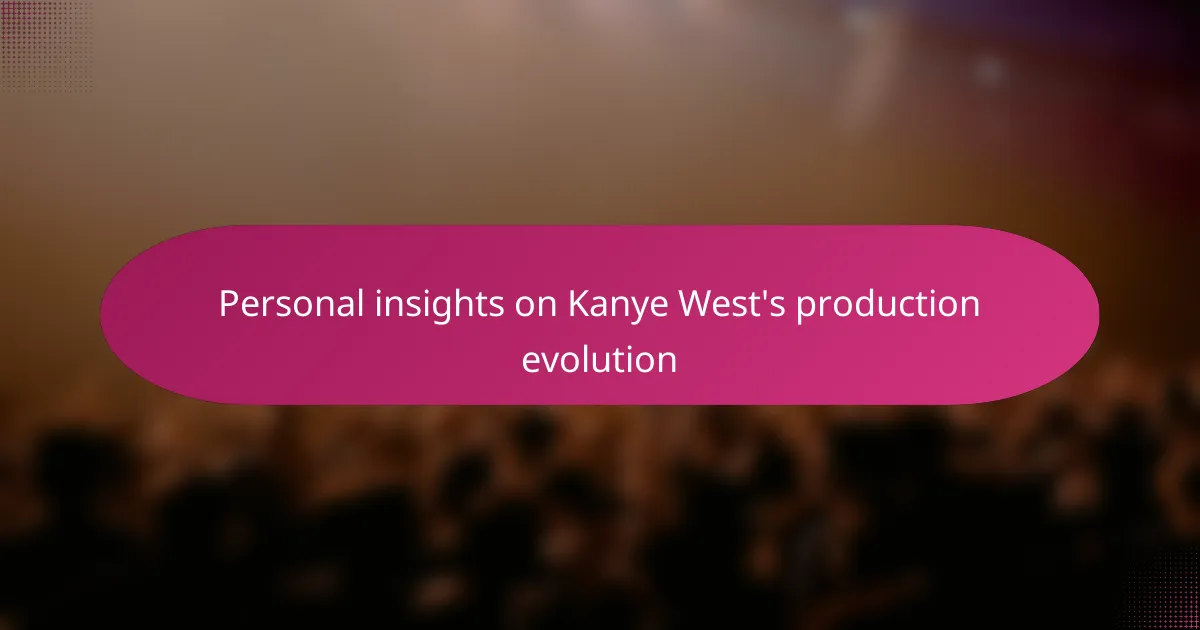
Personal insights on Kanye West’s production evolution
What really hits me about Kanye’s production evolution is how fearless he is in embracing change. I remember feeling skeptical the first time I heard the minimalist aggression on Yeezus, wondering if it was too raw or abrasive. But looking back, that moment revealed to me the power of shedding comfort zones to discover new creative ground.
Another insight I have is that Kanye’s growth feels deeply personal, not just technical. When he moved into the vulnerable territory of 808s & Heartbreak, I sensed an honesty in the production that mirrored his own struggles. It made me realize that evolving your sound isn’t just about trends—it’s about channeling life’s twists into your art.
Lastly, I often ask myself how someone stays so innovative over decades in such a fast-changing genre. For Kanye, I think it’s his constant curiosity and willingness to fail publicly. This mindset reminds me to approach my own creative work with the same boldness—because real growth only happens when you’re unafraid to redefine yourself.
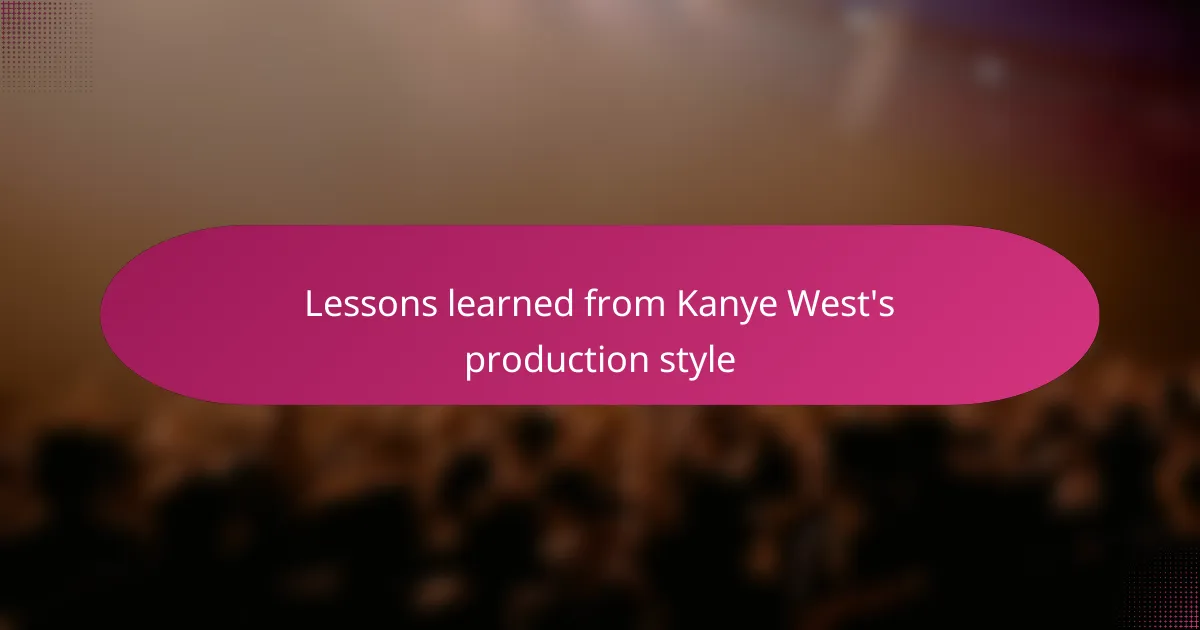
Lessons learned from Kanye West’s production style
One lesson Kanye’s production taught me is the value of emotional honesty in sound. Have you ever caught yourself connecting with a beat that feels raw and real? That vulnerability he injects into his music—whether through haunting vocal chops or sparse instrumentation—reminded me that production isn’t just technical skill but a way to tell personal stories without words.
Another take I had from Kanye’s style is the power of fearless experimentation. I remember first hearing the abrasive textures on Yeezus and questioning if that was even “music” in the traditional sense. But pushing past my own comfort zone made me appreciate how breaking rules can ignite creativity and open new possibilities in sound design and arrangement.
Finally, Kanye’s meticulous layering taught me how subtlety can make a huge impact. It’s not about filling every space with noise but knowing exactly when to pull back or let a single piano note breathe. That restraint, combined with bold choices elsewhere, is what makes his beats so compelling. It’s a balancing act I’m still trying to master in my own projects.
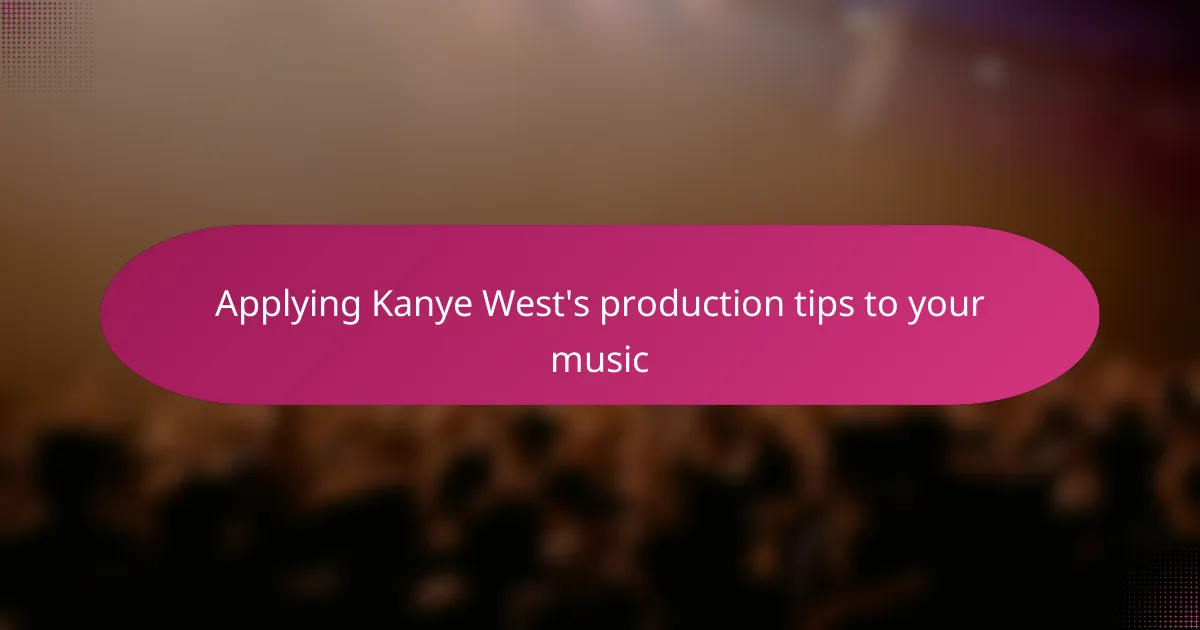
Applying Kanye West’s production tips to your music
Applying Kanye West’s production tips to your music means embracing emotion as much as technique. I’ve found that allowing imperfection—like slightly offbeat drums or raw vocal snippets—adds a human touch that polished beats often miss. Have you tried letting a “flaw” become the centerpiece to give your track more character?
Another thing I took from Kanye is the art of layering sounds thoughtfully. Instead of crowding a mix, he places each element with intention, building tension and release. When I started practicing this, my beats suddenly felt more alive, as if each sound was telling part of a story—not just filling space.
Lastly, don’t be afraid to experiment boldly with your sound. Kanye’s shifts from soulful samples to industrial noise taught me that growth requires risk. I remember hesitating to include unconventional sounds, but leaning into discomfort opened new creative doors I never expected. What boundaries could you break if you let go of fear?
